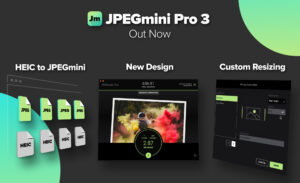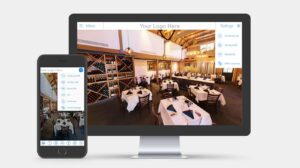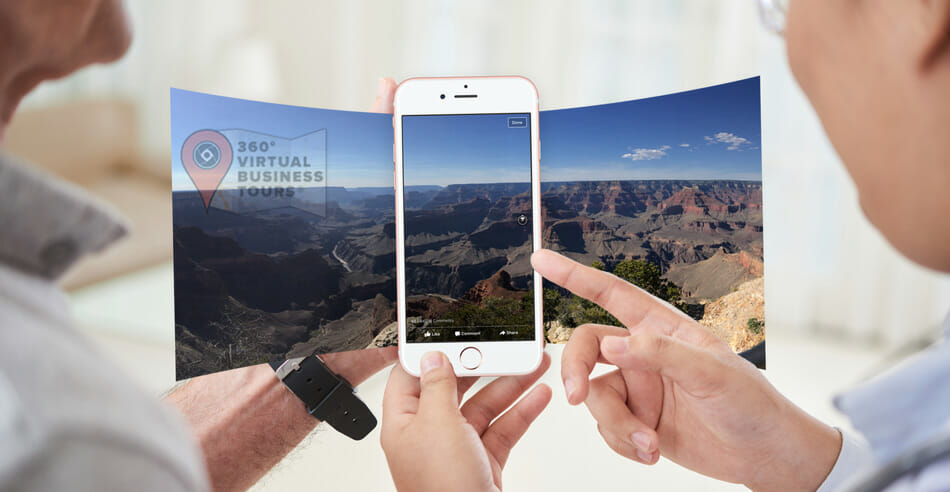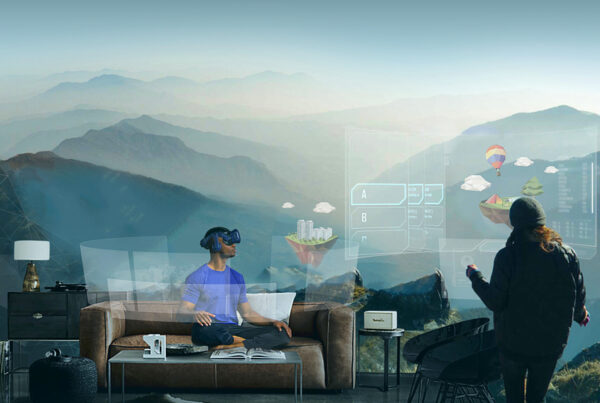Introduction
Innovative strides in digital technology have led to numerous advancements, such as the creation of 3DVista Virtual Tours, a software that empowers users to craft interactive 360-degree virtual tours. Incorporating diverse features such as panoramic views, 3D models, animated sequences, and a range of customizable options, this platform sets a high quality in the virtual tour landscape.
Sudden spurts in the usage of mobile devices for accessing digital content necessitates the need for 3DVista Virtual Tours to adapt and optimize for these platforms.
Key Takeaways:
Mobile Optimization: The article emphasizes the importance of mobile optimization for virtual tours, highlighting the need to ensure that tours are accessible and engaging on mobile devices.
Elevated User Experience: By optimizing virtual tours for mobile platforms, businesses and individuals can enhance the overall user experience and reach a wider audience.
Decoding Mobile Optimization: Why is it Necessary?
With a significant chunk of the user base accessing virtual tours from mobile devices, ensuring a positive user experience on mobile platforms is non-negotiable. When it comes to experiencing a virtual tour, performance is paramount. Mobile optimization steps in a vital role to enhance the user experience by improving the load speeds and overall performance of the tours on mobile devices. By creating separate mobile versions, 3DVista upholds the balance between maintaining quality suitable for mobiles and reducing the download times for users. Although this demands more storage space, it significantly enhances the mobile user experience, making it a trade-off worth exploring.
Thus, mobile optimization enhances user engagement and provides an accessible solution across varied devices.

Strategies for Enhancing Page Speed
Optimal page speed is crucial in the functionality of your 3DVista virtual tour and can significantly improve user experience. Achieving the desirable balance between high-quality content and fast loading times is critical. By introducing a variety of multimedia elements to a tour, such as videos, images, and audio, the file size increases which can reduce the speed. However, 3DVista offers users the option to export tours that have been automatically optimized, a feature designed to maximize quality and speed. This export option offers customization settings for loading speed and quality for each media item in your tour. This allows for fine-tuning that can help optimize performance based on the importance of each element in the tour.
The optimization process can also involve reducing the reliance on bandwidth-intensive aspects and streamlining the tour launch. User perceptions from research indicate that users preferred map-based hotspot launching of the tours and valued additional contextual content to make the experiences immersive.
Image Compression Techniques in Detail
Definition and Importance of Compression
Image compression refers to reducing the file size of an image without compromising on quality. For 3DVista Virtual Tours, this process is important as it allows for smaller file sizes that still look high quality, offering quicker upload times, reduced hosting fees, and improved user engagement.
Popular Image Compression Methods
Selecting the JPEG file format over PNG can significantly reduce the file size, while resizing the images to the necessary display size can prevent unnecessary file size increases. The use of the JPEGmini software is recommended, which reduces file sizes by approximately 15% without compromising the image quality. Geeky Photographer suggests that optimizing images after publishing the tour offers satisfactory results without introducing additional workflow steps. Hosting videos outside the tour folder can also greatly reduce tour folder size and hosting costs.

Model Simplification, Texture Reduction and Lightweight Rendering
The optimization of 3DVista Virtual Tours hinges on three key aspects: model simplification, texture reduction, and lightweight rendering.
Process of Model Simplification
The process of model simplification in 3DVista starts with the creation of model variants. The same geometry is maintained, while different materials are applied to improve the tours. An essential enhancement is the inclusion of 3D models in GLTF and GLB formats. The models are primed with optimized geometry, compressed textures, and level of detail (LOD). All these collectively ensure a smooth, fast, and fluid display of the virtual tours. This attention to model simplification not only ensures an optimal experience but also amplifies the level of viewer immersion and interactivity across devices source.
Benefits of Texture Reduction
Texture reduction plays a pivotal role in enhancing the 3DVista Virtual Tours’ performance by minimizing storage and loading requirements. The innovative projected image hotspot type, a unique feature of 3DVista VT Pro, allows adding different material variations independently over a single base panorama. Contrary to the traditional method of rendering hundreds of full panoramas for every possible material combination, this method relies on only one panorama and small hotspot images. This significantly reduces rendering time, storage, and loading, thereby resulting in more streamlined and lighter tours. In addition to these benefits, improvements in workflows are also noted through configurable menus, mobile-friendly skins, screenshot and URL sharing of specific configurations, and the freedom of interactive customization of textures and materials source.
Concept of Lightweight Rendering for 3D Virtual Tours
Lightweight rendering for 3D Virtual Tours forms a cornerstone of 3DVista’s approach to optimize tours. The platform advocates lightweight interactivity through extensive customization of hotspots, infoboxes, and assets. Performance optimization techniques are employed, such as providing automagical viewpoints between panos and implementing momentum physics on transitions to reduce resource usage. Another crucial step taken towards lightweight rendering addresses separate layouts for desktops and mobiles. Multiple preview resolutions ensure cross-device compatibility, adding a further layer of optimization source.
Responsive Design, Touch Controls, and Gesture Navigation
Overview of Responsive Design
Adapting to user behavior and the environment across devices, responsive design plays a significant role in optimizing the performance of 3DVista Virtual Tours. This technology dynamically adjusts the layout and elements to accommodate displays of varying sizes, contributing to an improved user experience regardless of device. A major advantage of 3DVista’s responsive design is its automatic scaling feature. A tour optimized for the desktop can be compactly recreated on a smaller mobile screen, saving bandwidth while preserving high quality. The overall design is flexible and fluid, providing a seamlessly optimized viewing experience.
Importance of Responsive Design for Virtual Tours

With the surge in mobile computing, ensuring that virtual tours operate fluidly on all screen sizes has become paramount. The 2022 update of 3DVista considerably improved user engagement by enabling offline access across devices, as well as introducing multilanguage support for all tour components. This functionality allows the same 3D model-based tour to be translated into different languages, significantly enhancing user interactions while optimizing tour experiences. It is clear that responsive design is a crucial element for successful virtual tours.
Role of Touch Controls
Touch controls represent an increasingly common characteristic of mobile interfaces, heralded for their intuitive ease-of-use and ability to save screen space. While providing a more interactive experience, touch controls also allow for more creative exploration. They offer rapid and direct control over digital elements, simplifying tasks and streamlining the user interface. It’s important to understand the growing significance of touch controls as part of a natural user interface, despite potential unfamiliarities to some users.
Significance of Gesture-Based Navigation
Gesture navigation has revolutionized the way users interact with digital content. Gestures such as swiping, pinching, and long pressing facilitate effortless navigation within mobile interfaces, allowing for rapid actions and direct content manipulation. Gesture-based interaction has increasingly become an essential part of the touch experience, removing barriers between users and machines and offering a more immersive and engaging experience. The accelerated adoption of natural user interfaces (NUIs) across all device types underscores the growing centrality of this technology.
| Feature | Benefit | Application in 3DVista Virtual Tours |
|---|---|---|
| Touch controls | Intuitive and natural interface | Allows users to navigate the virtual space by tapping on different areas |
| Gesture recognition | Hands-free control | Allows users to navigate using intuitive hand gestures without touching anything |
| Voice commands | Hands-free control | Users can navigate by speaking directions aloud |
| Joystick/gamepad | Precise movement control | Enables smooth navigation similar to video games |
| Eye tracking | Hands-free, heads-up control | Users can look around the virtual space hands-free |
FAQs
- Q: How do I optimize my virtual tours for mobile devices?
- A: Mobile optimization is crucial. Ensure that your virtual tours are responsive, load quickly, and provide an excellent user experience on smartphones and tablets. Test them across different devices to ensure compatibility.
- Q: Are there any limitations on the number of tours I can create?
- A: Not at all! With 3DVista Virtual Tour Pro, you pay a one-time fee and gain access to unlimited tours. Feel free to create as many tours as your business needs without worrying about additional costs.
Conclusion
Finally, the imperative of mobile virtual tours optimization cannot be ignored in today’s digital landscape, where mobile devices play a crucial role in how users consume content.
You should explore strategies and techniques such as image compression, model simplification, lightweight rendering, touch controls, gesture navigation, responsive design and on-demand loading to ensure maximum efficiency and functionality. Ensuring that virtual tours are optimized for mobile platforms not only enhances accessibility but also amplifies engagement and user experience.









Recent Comments